Top employee engagement survey tools
Employee engagement — or the level of connection that an employee feels to their employer, their coworkers, and their work in general — is a crucial metric for organizations to monitor. That’s why smart organizational leaders seek to understand how to improve employee engagement.
That makes sense once you think about the difference between engaged and detached employees. A highly engaged employee tends to be
- Committed and excited to take on new challenges
- More productive and motivated to work toward the company’s success as well as their own
- Loyal to the company
- Always on the lookout for new ways to learn and broaden their existing skill sets
The most engaged employees can actually become persuasive ambassadors for your organization, helping convert new talent, customers, prospects, and the community at large to your mission.
Engaged employees are the goal of any organization or company that values its top talent and wants them to stick around, rather than losing them to competitors. In fact, that’s why employee engagement is an important item in any performance appraisal.
The significance of employee engagement for company success
Maximizing your company or organization’s employee engagement yields many benefits to the company and its workforce in general:
- It reduces turnover. The more enthusiastic your employees are about your organization, the less likely they’ll be to look elsewhere for career growth and satisfaction.
- It’s proactive. Strong employee engagement rates highlight potential trouble spots before they flare up and cost your business in terms of money, human resources, and even clients or customers.
- It’s fiscally smart. High rates of employee engagement mean you can keep top talent on board for much longer, which ultimately saves the company the costs associated with onboarding new employees.
A strongly engaged workforce simply does better work and helps the organization reach its goals.
The purpose of an employee engagement survey
Companies use employee engagement surveys to measure just how connected their employees are to the organization and how strong their commitment is to their workplace.
Generally, employee engagement survey questions assess the employee’s experience with the organization. The questions will inquire into a number of different areas: job satisfaction, leadership communication and transparency, leadership and management effectiveness, and alignment with the organization’s stated values.
The benefits of using surveys to assess employee engagement
It’s hard to effectively identify and remedy a problem in your business without one vital tool in your kit: hard data. That’s why employee engagement surveys are so helpful to a company’s leadership. Well-designed survey questions elicit the hard data about current levels of engagement straight from the source: the employees themselves.
By monitoring existing levels of engagement, these surveys also help company leaders improve future engagement, as the responses highlight areas that need specific attention. The company can better direct its resources to the programs and initiatives that will have the biggest impact on employee satisfaction and engagement levels. It’s also a useful way to avoid wasting time and money on things that don’t need as much optimization and effort.
Tips for choosing the right employee engagement survey tool
To select the right employee engagement survey solution, organizations should look at five key factors:
Customization: Does the solution or tool let you craft and tailor the questions to suit your company’s goals and existing workplace culture? Does it allow you to target specific subsets of your workforce (such as a particular department or a group of roles)?
Ease of use: How user-friendly is the tool’s interface? Will your employees find it easy and intuitive to complete and submit the survey? Does it display well on different devices, including smartphones and tablets?
Analytics and reporting: Does this solution offer effective data analysis functions and features? Does it provide access to visual dashboards and allow you to segment responses? If it advertises advanced technology such as AI, does it make good use of that resource by providing predictive analytics and heatmaps?
Data security: Are the responses to your survey kept anonymous so employees feel safe to provide honest feedback? Are there clear security protocols in place? Does the tool’s data security comply with applicable data protection regulations such as GDPR to protect your company’s most sensitive data?
Integration capabilities: Does the tool work well with your organization’s existing tech stack and communication platforms, ensuring that employees can streamline their workflows and your business can benefit from increased adoption rates?
10 best employee engagement survey tools
With the above information in mind, let’s look at 10 of the best tools on the market today that will help you create effective employee engagement surveys.
1. Culture Amp
- Key features: Research-backed templates and robust analytics, support for over 25 languages, simple and straightforward user interface
- Pros: Action plans, built-in templates, user-friendly solution
- Cons: Potentially time consuming to train employees and implement across a large organization; difficulties with managing integrations with Microsoft Teams
- Plans/pricing: Culture Amp offers different plans focused on different solutions: Engage (surveys), Perform (performance improvement), Develop (add-on focused on employee development). Organizations can also bundle all three solutions into a single plan. All pricing is by requested quote.
Designed for medium to large businesses, Culture Amp offers customizable surveys, powerful analytics, and actionable recommendations to maximize your company’s employee engagement rates. It also includes benchmarking tools to compare your company’s performance with industry standards. With its focus on employee well-being and development, Culture Amp is a powerful tool for any HR or leadership team seeking to build a thriving, positive workplace culture.
2. Lattice
- Key features: Strong AI-powered, all-in-one platform combining engagement with performance management; one-on-one meetings and management functionality
- Pros: Simple and relatively quick tool to install and deploy to all employees; responsive customer support
- Cons: Difficulties associated with configuring customizations; some limitations on types of questions that can be used in specific surveys
- Plans/pricing: Lattice offers two options, Talent Management and HRIS, with add-ons for additional functionality. The Core HRIS package starts at $10 per seat per month, and the Foundations package for talent management is $11 per seat per month. The Engagement add-on delivers survey capabilities for an additional $4 per seat per month
Lattice combines employee surveys with performance management tools. This lets leaders connect engagement insights to employee benchmarks. Its user-friendly interface and integration with goal-tracking systems make it a solid choice for companies focused on achieving business goals more efficiently through feedback systems. Lattice is particularly useful for teams that want to link engagement with performance and career development.
3. Jotform
- Key features: Flexible and customizable survey tool with value pricing; ability to create different types of surveys to measure employee engagement and track results with Jotform Tables
- Pros: Ability to include different question types in your surveys such as multiple choice, single choice, Likert scale, and open-ended questions; ability to create an app for organizational employees with drag-and-drop tools
- Cons: Extensive flexibility that might take some time to unpack in full
- Plans/pricing: Jotform offers four plans ranging from free to $99 per month, with different limitations on form submissions, received payments, and more. An Enterprise plan is also available with custom pricing.
Jotform does a lot more than help you easily create customizable surveys with drag-and-drop functionality. Despite its technological flexibility, Jotform’s affordability and ease of use make it a great choice for small businesses as well as for organizations or teams with limited technical expertise. It’s a great way to gather straightforward feedback quickly.
4. Qualtrics XM for Employee Experience
- Key features: Enterprise-grade platform with advanced AI analytics and access to raw data and segmentation tools
- Pros: Feedback management and employee engagement tools
- Cons: Challenges with viewing results from more than one section
- Plans/pricing: Pricing for Employee Experience plan is available upon request.
Qualtrics XM for Employee Experience is better suited for large companies and organizations. It provides advanced analytics, predictive insights, and tools for understanding the entire employee lifecycle. HR teams will appreciate its native integrations with popular HR software. This platform is a good choice for organizations that need a comprehensive and scalable solution for employee engagement.
5. 15Five
- Key features: Popular tool for combining check-ins with engagement surveys; data visualization; ability to measure employee sentiment on an ongoing basis
- Pros: High rate of uptime, accessibility on mobile devices, integration APIs
- Cons: User reports of occasional difficulty with tracking objectives and peer reviews
- Plans/pricing: 15Five offers three plans ranging from $4 to $19 per user per month. Choose a focus of “engage” (monitoring employee engagement levels), “perform” (monitoring employee performance and feedback), or both. 15Five also offers manager and training coaching.
Best for small to medium-sized businesses, 15Five is well-suited for organizations and teams that want to foster a more open, transparent culture based on continuous optimization and improvement. With its weekly check-ins, 15Five encourages a continuous feedback system as well as more open, transparent communication between employees and managers. This platform also includes tools for goal tracking, performance reviews, and one-on-one meeting templates.
6. WorkLeap Officevibe
- Key features: Automated pulse surveys and anonymous feedback; one-on-one meetings management
- Pros: Easy-to-use tool, access to real-time data on shifting employee sentiment, and excellent customer service
- Cons: Some complaints of missing features and limited customization options
- Plans/pricing: Workleap Officevibe is available as a standalone tool for $5 per user per month. You can also get other Workleap tools bundled together for $22 per user per month.
Workleap Officevibe specializes in pulse surveys and real-time feedback. This approach helps leadership teams keep an eye on employee sentiment on a regular basis, providing the ability to spot and address problem areas before they become crises. It includes features like anonymous feedback and built-in coaching tips to help employees address challenges in the workplace.
7. TINYpulse by WebMD Health Services
- Key features: Continuous feedback and recognition capabilities; customization of many aspects of surveys including questions, distribution frequency, audience size, and anonymity
- Pros: Centralized dashboard, employee pulse surveys, and easy setup
- Cons: Occasionally less-than-relevant survey questions
- Plans/pricing: Pricing is available upon request.
TINYpulse is another employee engagement tool that offers quick, anonymous surveys that encourage honest and transparent feedback from employees. It also features tools like peer recognition and trend analysis to promote a more positive work culture. This platform is ideal for companies that need agile solutions to monitor and improve their employee engagement rates.
8. Workday Peakon Employee Voice
- Key features: Predictive analytics and global capabilities; employee segmentation; expert-assisted onboarding, deployment, and training
- Pros: User-friendly solution with employee recognition tools
- Cons: Some user reports of problems with creating and deploying surveys and a need for more interactive survey options
- Plans/pricing: Pricing is available upon request, but Workday Peakon is viewed as less expensive for many medium-sized organizations than other employee engagement tools.
Peakon Employee Voice is a particularly good fit for medium to large organizations that need more proactive engagement strategies. Boosted by access to AI-powered insights, it provides real-time feedback and predictive analytics to help organizations identify and address issues early. It also supports personalized action plans and detailed benchmarking to help manage employee performance more effectively.
9. SurveyMonkey
- Key features: Trusted tool with an easy-to-use interface; accessible tool for all users at all phases of survey administration, management, and review
- Pros: User-friendly interface, data management tools, easy setup and deployment, and function-based templates
- Cons: Potentially steep learning curve for some users; difficulties with finding the right template
- Plans/pricing: The Team Advantage plan ($30 per user per month, with a three-user minimum) includes survey sharing, asset library, and more. The Team Premier plan ($92 per user per month, with a three-user minimum) doubles responses included and adds multilingual surveys, sentiment analysis, and more. An Enterprise-level plan is also available; request a quote.
SurveyMonkey is perfect for small to medium-sized businesses that want to identify and act on employee engagement trends quickly. Combining user-friendly survey tools with analytics, SurveyMonkey helps teams gather and interpret feedback with ease. It includes prebuilt templates and employee experience dashboards, which makes this tool accessible even for small companies and HR teams.
10. Microsoft Viva Glint
- Key features: Strong learning integration; support for more than 40 languages; anonymous responses for greater transparency
- Pros: A solution that’s quick to learn and easy to use use; interactive features
- Cons: Limited customization options
- Plans/pricing: Viva Glint offers three paid plans, starting at $2 per user per month.
Best suited for larger organizations and companies, Microsoft Viva Glint focuses on employee engagement and development through regular surveys, AI-driven insights, and flexible reporting tools. It integrates with Microsoft Viva Insights.
Photo by RDNE Stock project

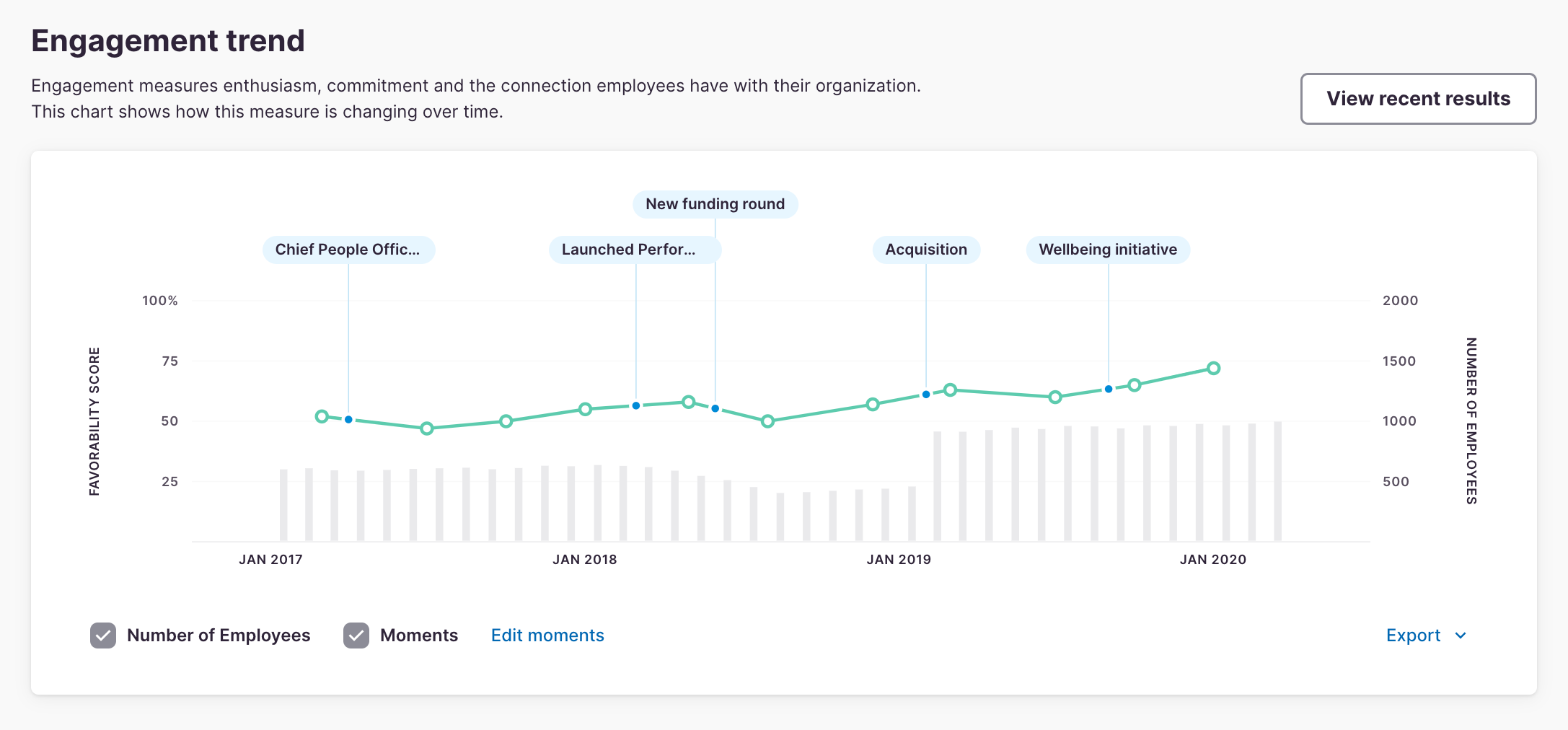
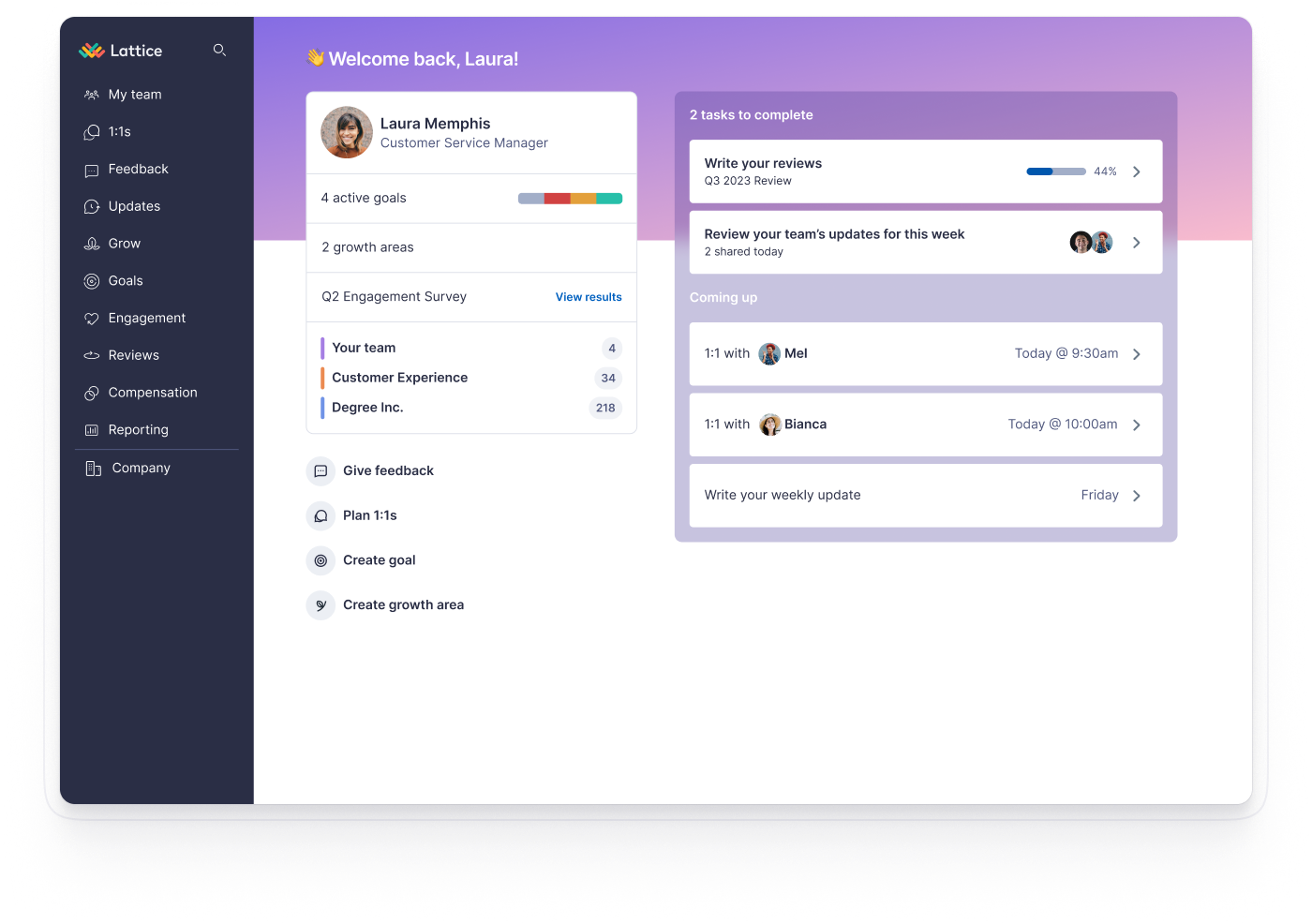
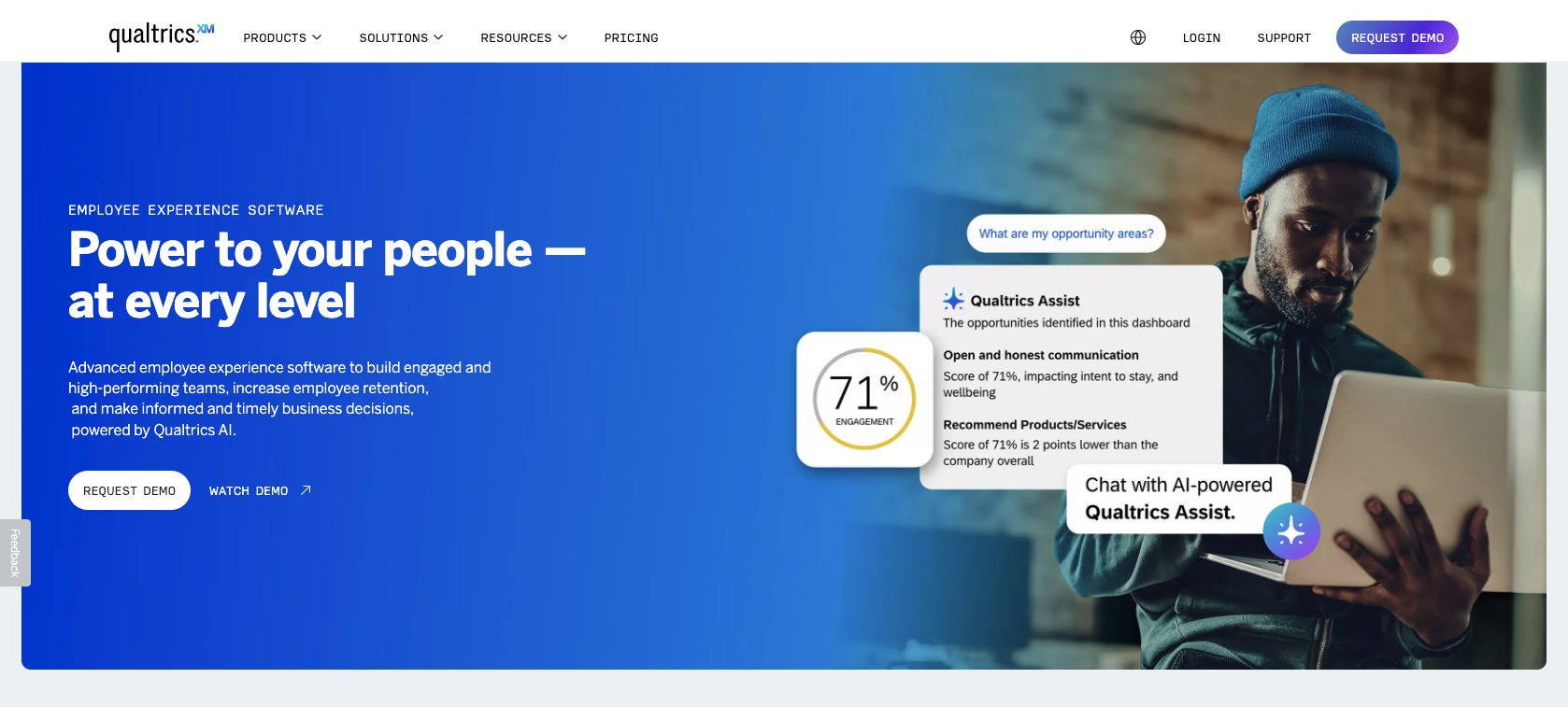
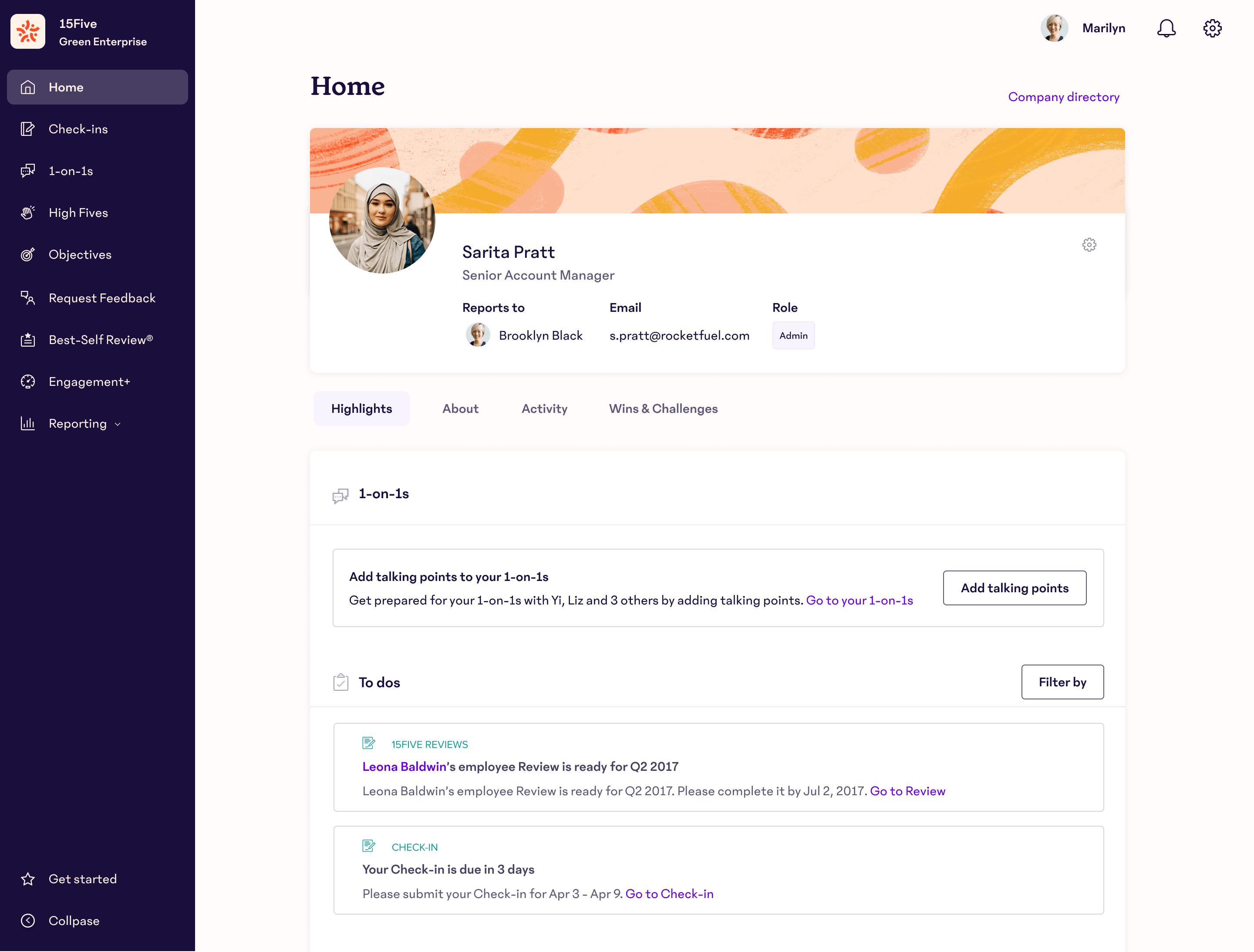
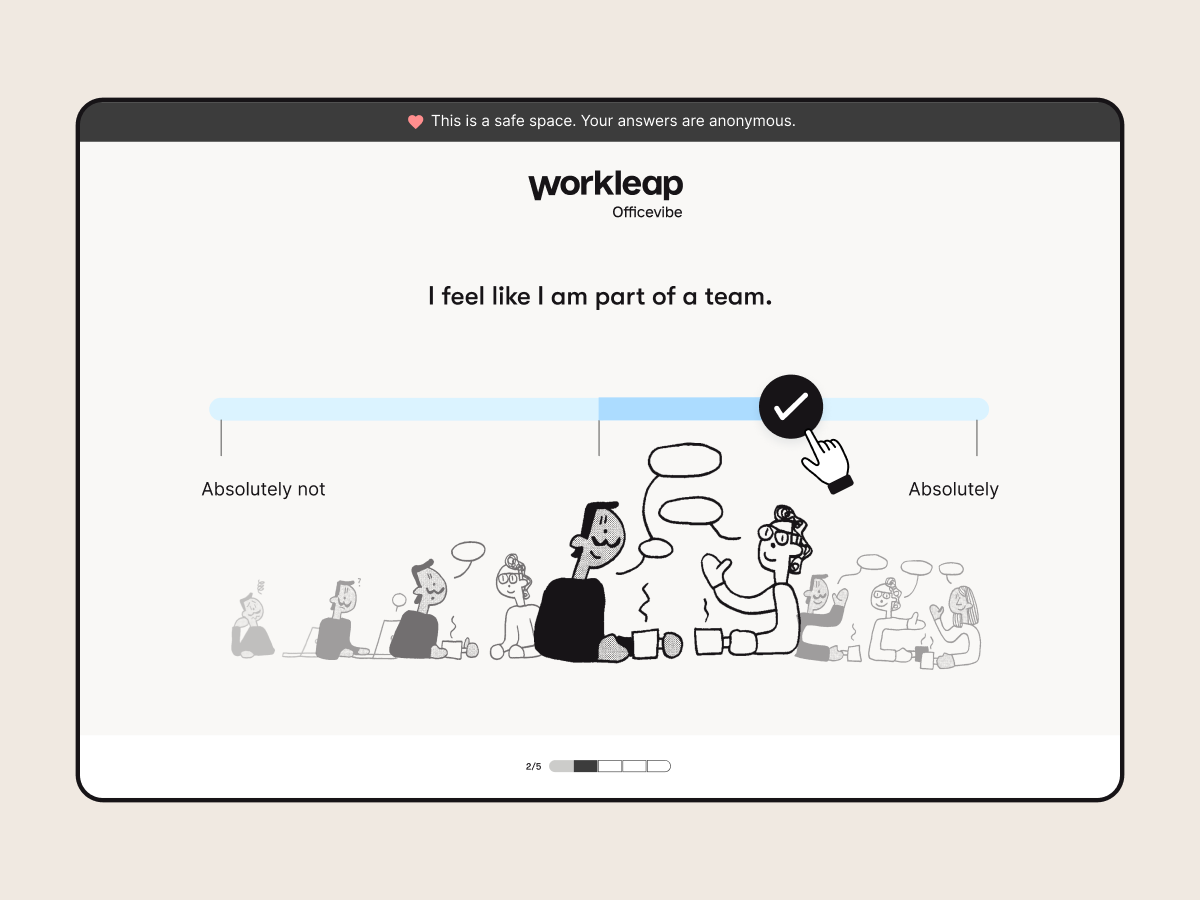
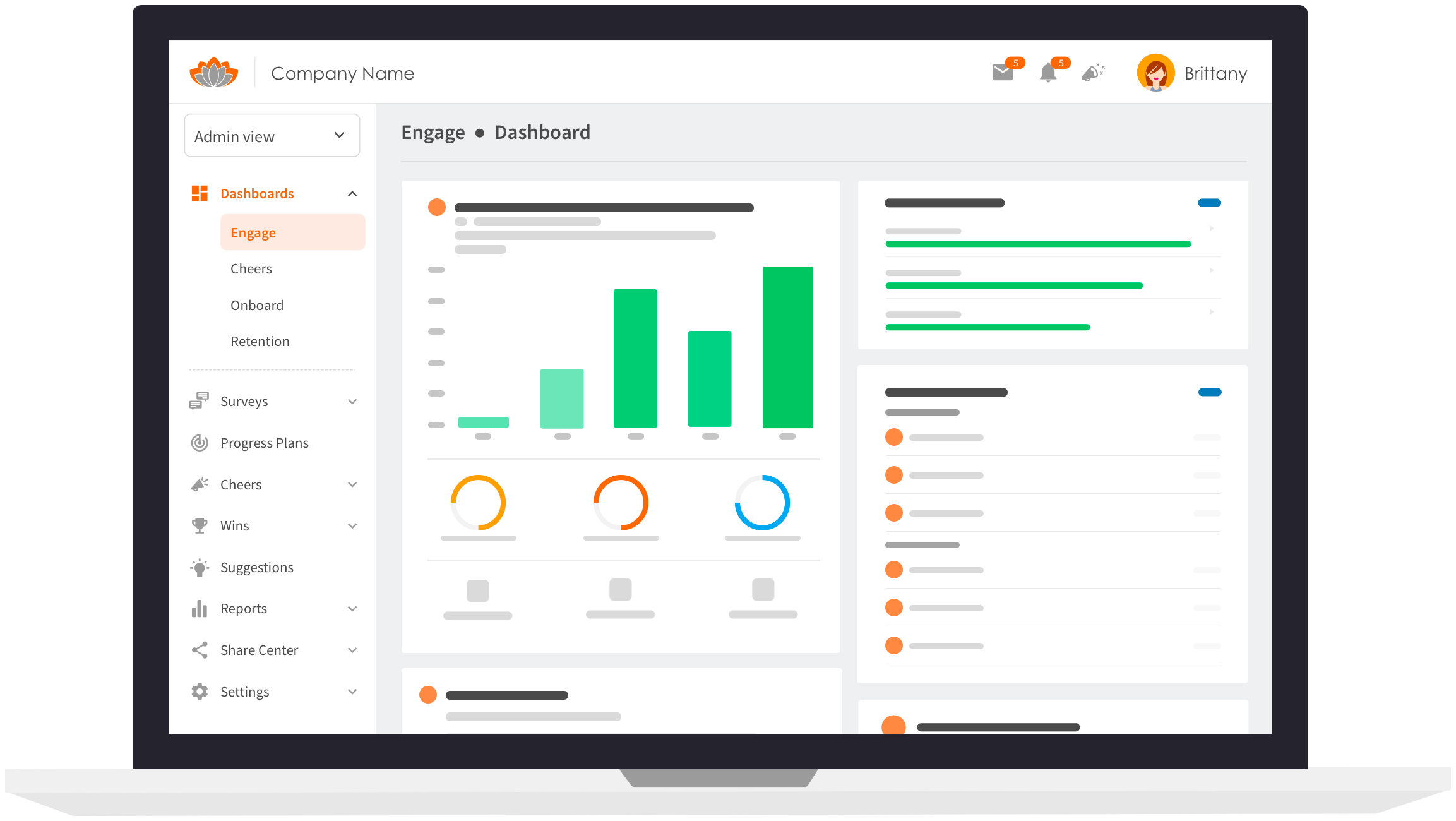
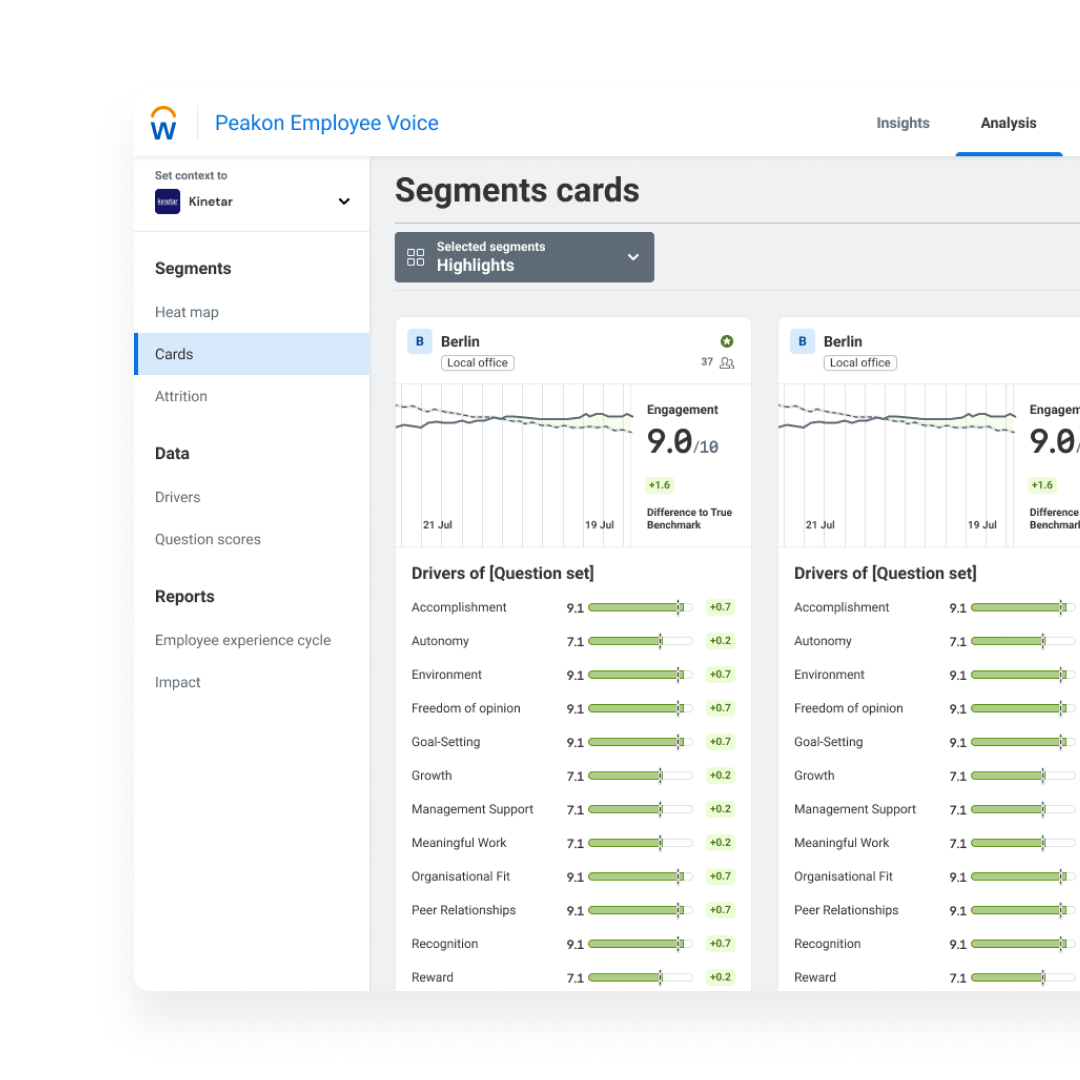
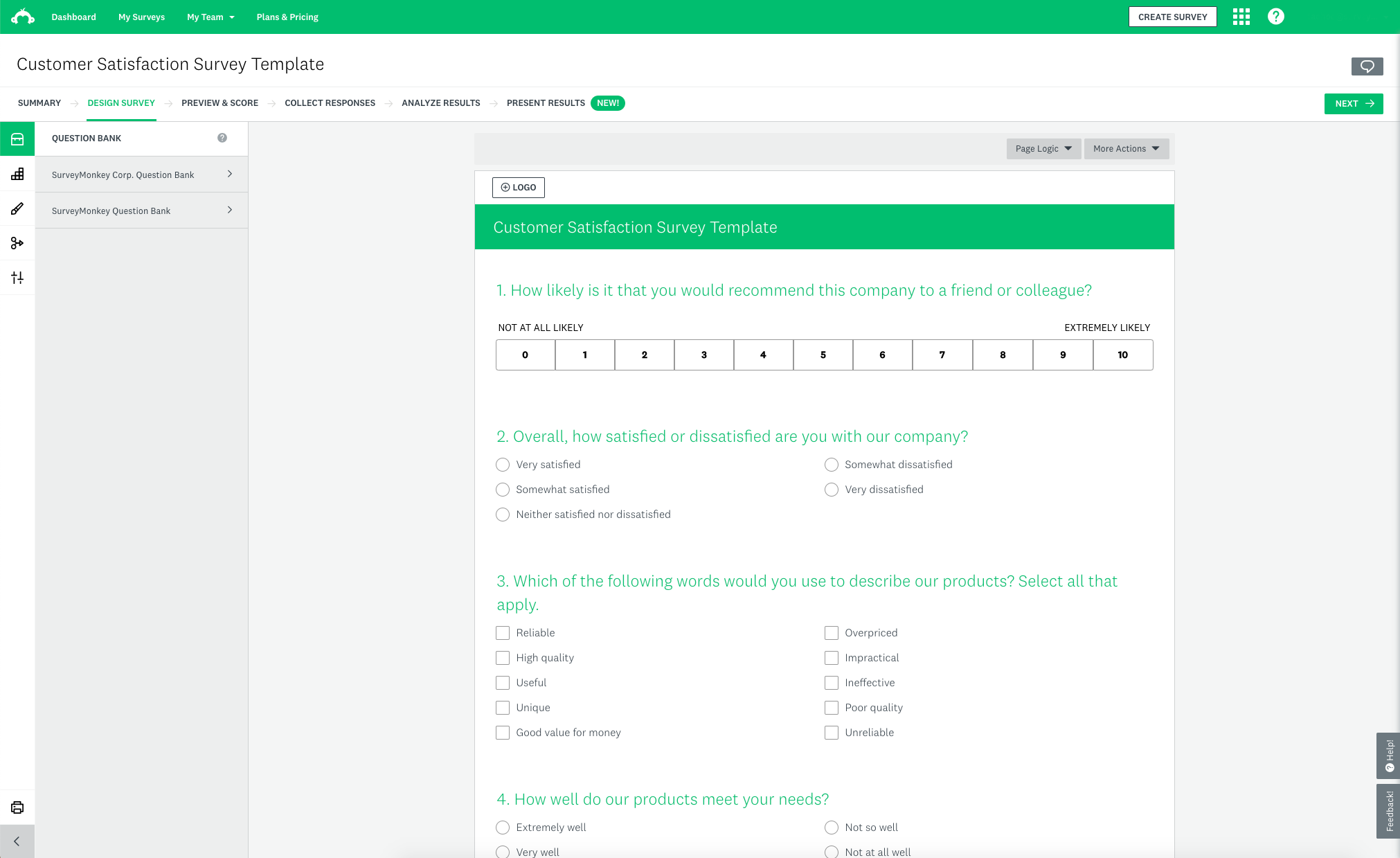
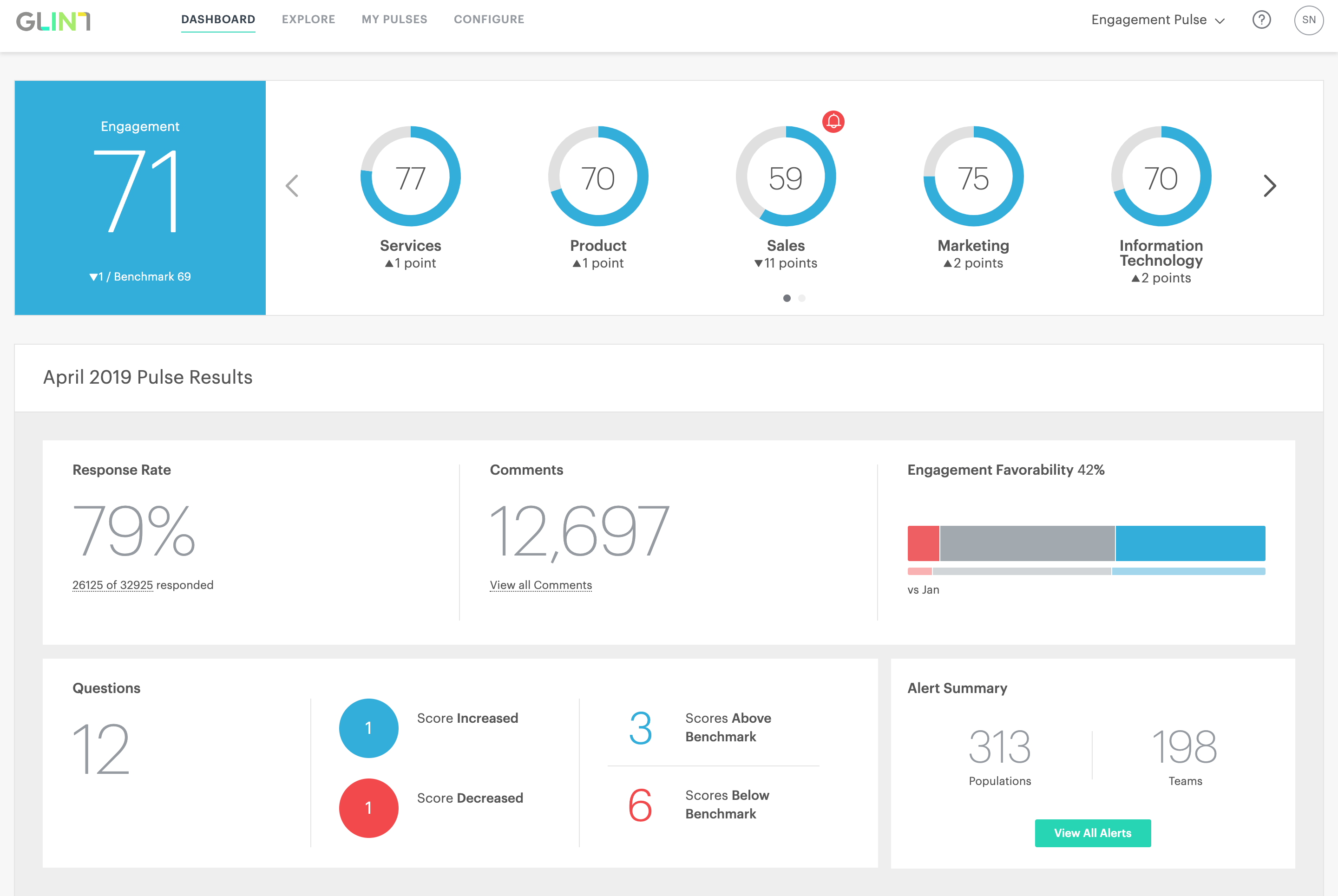





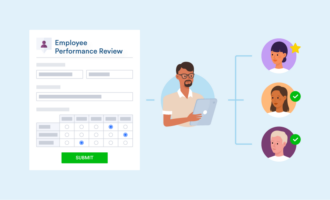
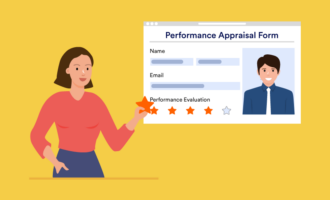









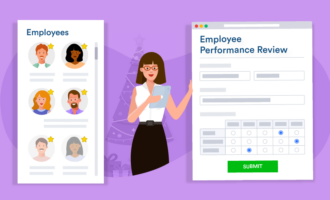



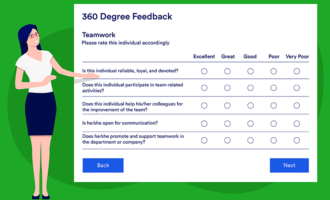




Send Comment: